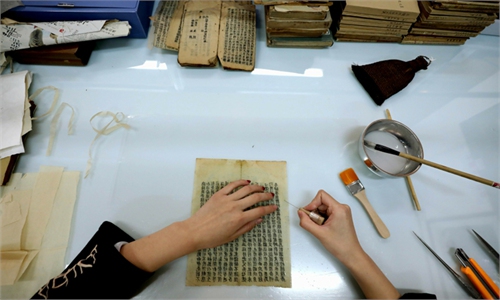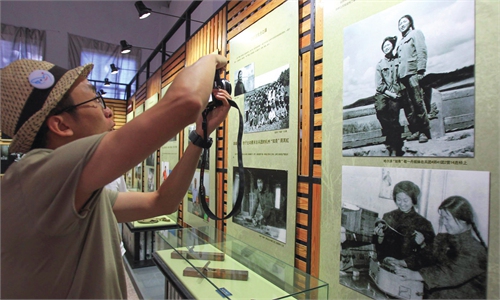ARTS / BOOKS
Exhibition dedicated to globally acclaimed writer Jorge Luis Borges kicks off in Beijing

The poster of the El atlas de Borges exhibition at the Instituto Cervantes in Beijing. Photo: Courtesy to the exhibition
The cultural exhibition El atlas de Borges, which aims to bring the literature legacy of the great Argentine writer Jorge Luis Borges to readers in China, was launched on Thursday at the Instituto Cervantes (Cervantes Institute) in Beijing.
The exhibition is named after Borges' literature work Atlas, a collection of photographs, prose and verses created by Borges and his wife Maria Kodama during their travels around the world after the great poet had lost his sight.
Born in 1899 in Buenos Aires, Borges was a landmark figure in Latin American literature and one of the most influential writers of the 20th century. The writer was best known for his imaginative short fiction stories such as Ficciones (1941), The Garden of Forking Paths (1944) and The Book of Sand (1975). In 1961, he achieved his first major milestone by winning the Formentor Prize. Ten years later in 1971, he won the Jerusalem Prize. These two achievements demonstrate the writer's significant place on the international literature stage.
The Borges exhibition in Beijing was introduced by Instituto Cervantes President Isabel Cervera and Ambassador of Argentina to China Luis María Kreckler, both of whom paid homage to this Argentinean cultural prophet and emphasized the importance of developing China-Argentina cultural exchanges.
The exhibition is scheduled to end on December 6.



